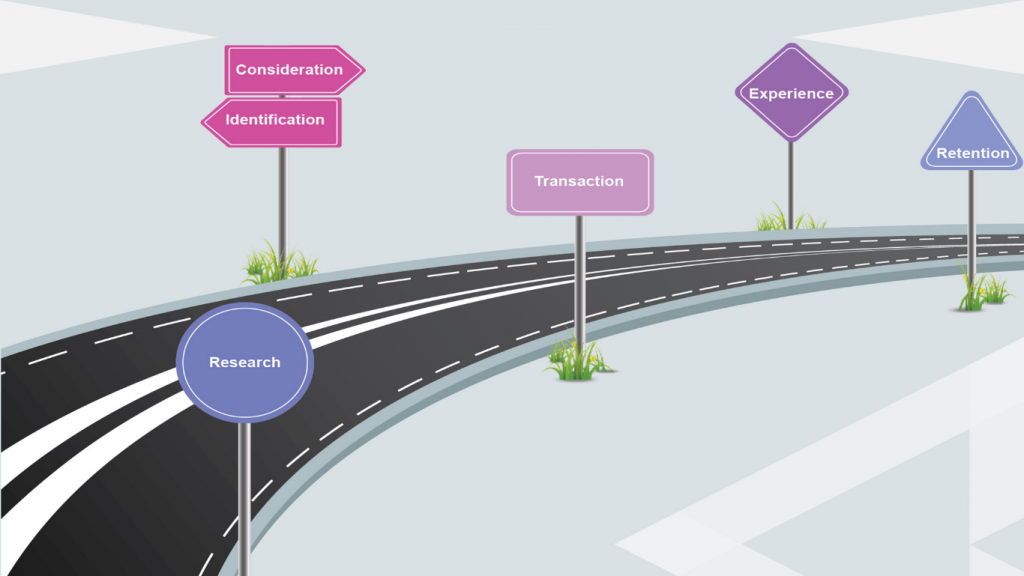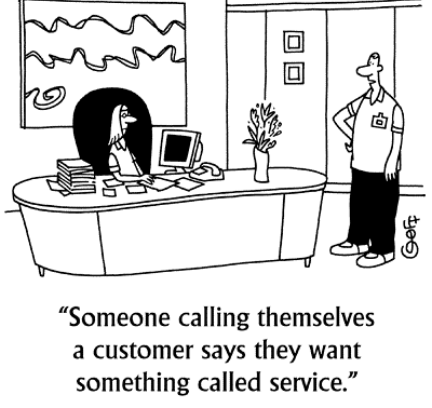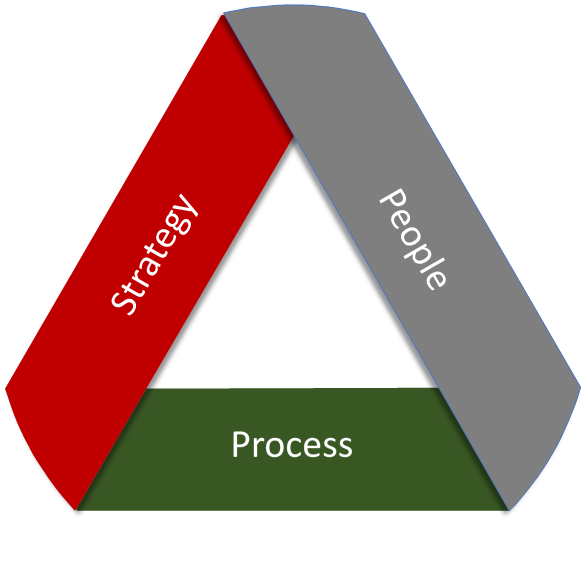There is a big difference between doing what’s expected and what’s really appreciated, between answering a question and solving a problem, between completing what is required and doing what inspire customers!”

Customers are more empowered than ever! There are more technologies at their fingertips; coupled with challenging market conditions, the difficult economic climate, abundance of products, development of new conceptual experiences along with aggressive competition are combined to create an excess of new challenges and opportunities for businesses when it comes to the service aspect of the organization.
The growth of social media has played a major role in empowering consumers as well and making their social feeds plays an important factor in building the organizational brand reputation – and it provides yet another outlet for consumers to share their experiences (both good and bad) with their networks. With this, the impact of good or bad customer service is amplified.
“When the alarm bell rings, you’d better get up and realize that the customers expect more from today than the day before. You’d better find ways to be better.”
In today’s hyper-connected world, customers have more choices than ever—and they often decide in a split second whether or not to do business with you. With the increasing customer’s demands on products and service, people are less connected to your organization and more independent which puts negative pressure on loyalty scale and reduces client lifetime value.
Customers expect you to be creative also in the way you deliver your products, they want you to be fast, prompt, cost efficient, reliable, easy to contact and do business with.
Like the old adage says, “you never get a second chance to make a first impression.” Having good customer service once meant that you would send your customers away happy and it would bring them back again. Not quite so – there’s more to it these days. That’s due in part to the swift-moving evolution that is taking place in the world of customer service. Sure, you need to ensure that your customers walk away happy, but even while they are away, you need to continue reinforcing their contentment with your company.
The question that forces itself is how we can be connected to our customers and how we can develop customer centricity and how we can increase reliability in this fast-moving economic environment? The answer to this question is related directly to the organizational ability to find means to make every human encounter easy, fast, smooth, productive and comfortable. You will need to engineer your processes and procedures with respect to the Voice of Customers (VOC), make sure you are providing value at each touch point, and ensure that your people are enabled and empowered to deliver!
If this is achieved then the organization is building up its own service culture!
Service Culture is somehow a reflection of the organizational collective focus, a true understanding of customers drivers and needs, change and innovation and shared beliefs represented by the organizational values that must be crafted to deliver inspiring meaning to the customer.
Service is not an independent event. It is an interdependent chain of activities also having service culture is a collaborative responsibility! Every function and every person within the company is directly or indirectly helping in shaping customer perceptions!

Companies who developed service culture exhibit a common profile, demonstrating a similar pattern of values, beliefs, and behavior to support their strategies and objectives listed in the following three components:

Strategy
· Commitment – Service quality is a key corporate value, with associated goals, action programmes, measurement and top-level accountabilities.
· Credibility – Promises are kept, service is delivered at times that suit customers and superb service recovery systems are in place.
People
· Capability – People are recruited and developed against competencies that give high priority to customer–focused attitudes, e.g. consideration, tolerance, and empathy
· Continuity – Retention, reward and recognition strategies focus on world-class service delivery.
Processes
· Consistency – Processes are designed from a customer’s viewpoint and are consistently delivered.
· Creativity – Continuous improvement and innovation are nurtured and encouraged to flourish.
Companies that promote a common service language and nurture service culture have a strong collective focus. Employees across all functions and departments—virtually everyone, from product developers and designers to sales staff and service agents and even HR employees— see customers as the company’s number one priority. This encourages a commitment to customers that replaces other priorities when conflicts arise. To foster a strong collective focus, the service-oriented companies pay attention to articulating a shared vision of what it means to deliver a great customer experience.
The service-oriented companies devote significant resources to communicating the customer value proposition, and they work hard to ensure that employees at all levels understand the role they play in delivering that value. Service Oriented companies reinforce their collective focus by defining core principles and common standards that guide employee behavior. Well-defined principles and standards direct attention and influence decisions across the organization, among employees who interact directly with customers, and among those who impact customers in less direct ways, through product design, procurement, payments, and other activities.

At Disney Resorts, for example, every employee (not just those who interact with guests) knows Disney’s four key values for creating guest happiness: safety, courtesy, show, and efficiency.
In addition, they know how the values are prioritized (safety is always first) and the types of actions and behaviors that go along with each.

Because Disney recognizes that providing a great customer experience requires having managers who support that experience, leaders are also expected to uphold the principles in their work, making decisions and allocating resources in line with the company’s standards.
Service Oriented Cultures encourage, support, and reward cooperation across operations. This is because of teamwork and collaboration which are essential to creating a smooth and consistent customer journey. Not surprisingly, customer-centric companies often invest in an extensive employee training and coaching to ensure that a company’s vision and value proposition are systematically represented in its service offerings and products.
About the Author

Mahmoud Iskandrani
Co-founder & CEO
Mahmoud is CEO, Co-founder & Managing Partner in LeapToSuccess. As an individual, Mahmoud is an accomplished, enthusiastic and committed consultant
Read More
